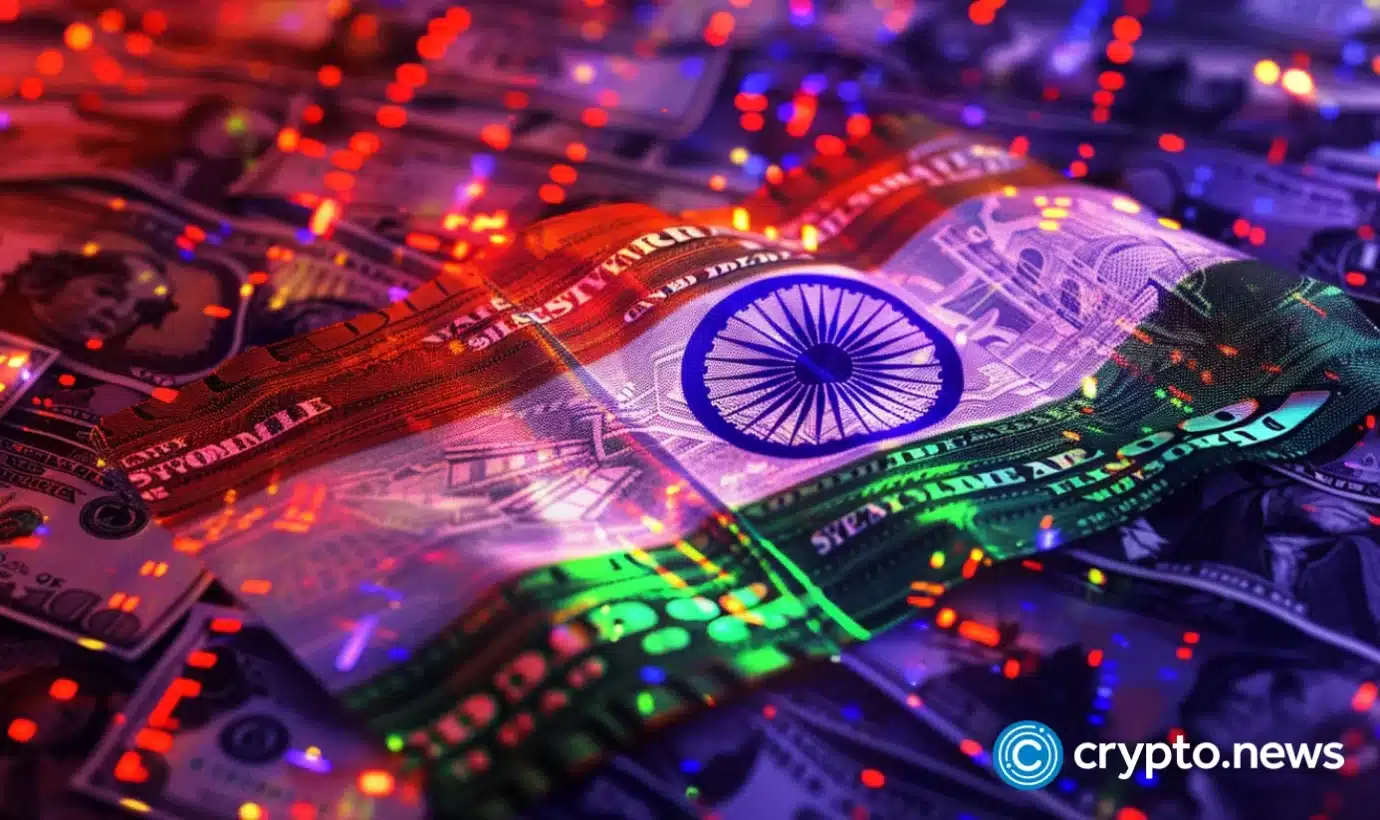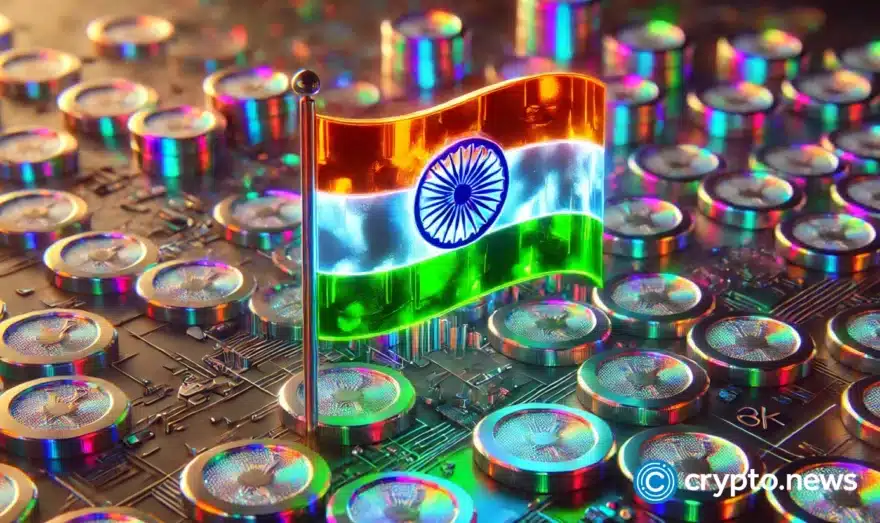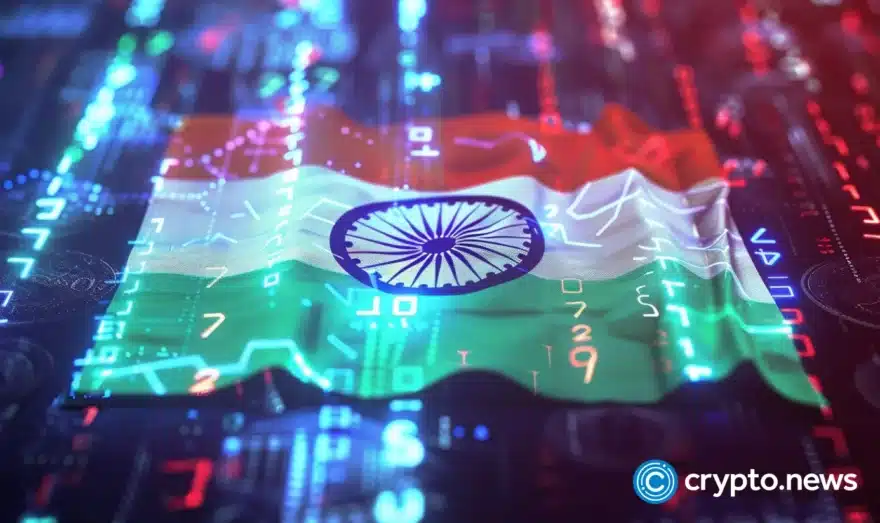Why is USDT more expensive in India? We talked to top local exchanges

In India, USDT is sold at a premium or marked-up rate, putting pressure on local crypto traders and investors. With tight regulations and added costs when it comes to escaping volatility, what is life really like for Indian traders?
Crypto.news spoke with executives from the two largest crypto exchanges in India, CoinSwitch, and WazirX, as well as members of the nation’s retail trading community to find out.
Table of Contents
Why is USDT sold at a premium in India?
While in the global market, 1 USDT is usually sold for $1 USD, USDT in India is typically sold at around 5 – 12% above world market rates, with other stablecoins facing similar premiums or costly withdrawal fees.
Balaji Sirhari, Business Head at CoinSwitch which is India’s largest exchange with over 20 million users, states that for many Indian investors, intraday trading is not profitable due to the USDT premium market and crypto taxes:
Most of the users on our platform invest for the long-term and consider crypto as a
diversification asset rather than preferring day-trading. This is due to the higher costs
involved in microtransacting in crypto.
We also talked to Nischal Shetty, head of the WazirX exchange, which recently made headlines for suffering a major security breach with over $200 million stolen from the exchange’s multisig wallet.
Nevertheless, WazirX remains the second-largest in India, with over 16 million active users. According to Shetty, there are a number of key factors in the USDT premium market:
First, Indian regulations make it difficult to directly deposit rupees into crypto exchanges. Traders turn to USDT, a stablecoin pegged to the US dollar, as a more accessible alternative. Second, the Indian rupee’s volatility against the US dollar incentivizes traders to hold USDT as a safe haven from currency fluctuations.
Shetty also pointed out that the high demand for USDT also drives up prices. Much like Kimchi Premium in South Korea, there is a difference in trading prices of crypto assets such as Bitcoin between Korean and foreign exchanges.
Are Indian traders leaning towards long-term investing?
Sirhari states India’s Tax Deducted at Source (TDS) as well as capital gains tax steer traders towards long-term investment, a trend no doubt further encouraged by the Tether premium market:
The 1% TDS on crypto transactions, along with the 30% tax on capital gains, makes short-term trading less appealing.
Shetty also weighed in on the subject of how the premium market impacts trading strategies in India:
From 2018 to 2021, when USDT price was between 60 INR and 80 INR, intraday volume ranged from 10% to 30%. In 2021, when USDT price went above 80, intraday volume decreased from 30% to 12%. In the last 6 months, as the USDT price increased from 87 to 93, intraday volume has been between 12% to 15%.
This has been constant apart from some outliers when USDT price decreased. That’s when intraday volume also increased. Our day trading and high frequency trading got affected more due to the implementation of 1% TDS.
Shetty’s exchange data, collated for this crypto.news report, indicates that traders are indeed beholden to the USDT premium market, with higher costs of Tether making intraday trading cost prohibitive.
The unique state of crypto investment in India
To get an end-user perspective, we also spoke with a number of traders and investors in India including Reddit user u/Bitmandoo, a prominent member of Reddit’s r/cryptoindia community.
Bitmandoo has been trading and investing in crypto since 2016, stating that “my experience has been largely positive and progressive. They cited an increased number of available options for trading as one reason for this outlook.
However, the veteran investor states that short-term strategies are falling out of style due to the Tether market:
No, trading crypto is not feasible in India due to the latest taxes. However, investing remains viable despite the taxes if you adopt a long-term strategy by buying and holding for multiple years. Short-term trading is not practical since the government taxes winning trades without allowing offsets for losing trades. I think India is the only country to do this in this whole world.
Bitmandoo states that traders in India typically buy USDT through peer-to-peer transactions, such as on the WazirX exchange which supports P2P trading. This unique system allows for people to onramp with stablecoins, but at a cost.
Speaking about the P2P market, Bitmandoo states that “with limited direct purchase options, users often resort to this method. Some rely on friends or family abroad to get USDT at a lower cost,” adding that “P2P scams are a significant risk for sellers, often leading to frozen bank accounts.”
The practice of trying to purchase USDT from sources outside of the country, referred to as ‘hawala’, is typically illegal, and investors are exposed both to scams and regulatory punishments by seeking it out.
Of course, that does not stop it from happening, with online forums rife with users claiming to have contacts in countries like Dubai that can source USDT at a reduced rate as all aspects of the market try to capitalize on the premium rates.
Unless Indian banks directly enter this business and competition among onramp/offramp platforms increases, the premium is unlikely to decrease.
Bitmandoo
The trader states that if crypto in India was taxed more like stocks, the industry would have a better chance at growing.
Are Indian crypto regulations stifling the industry?
WazirX has assumed the cost of India’s 1% TDS tax on crypto transactions to alleviate costs for traders and incentivize them to use the platform. Shetty told that the regulations have had a serious impact on the entire industry:
According to an Indian think tank Esya Centre, Indian crypto investors have moved over $3.852 billion (INR 32,000 crore) worth of digital assets from local to international crypto exchanges since February 2022 since the budget announcement to end of 2023. All Indian exchanges witnessed a staggering decline in trading volume compared to 2021.
However, the decision by the Financial Intelligence Unit in December 2023 which made it mandatory for all operating exchanges in India to register with the existing tax norms and charge taxes and TDS as per the government’s budget saw volumes coming back to Indian exchanges. For context, the number of crypto deposits on WazirX went up by 250% in the days following the FIU notice. The average transaction amount was also up by 100%.
In 2021, the Indian government from what Shetty says here, it’s possible that the Indian government’s added regulatory clarity is actually helping exchanges rather than hindering them, at least compared to the uncertainty seen in 2021 when it first introduced its cryptocurrency bill.
A unique situation for Indian crypto users
While the prevalence of the USDT premium market is unusual, it seems that for now, it’s here to stay, with Indian investors expected to pay 5 – 12% more than the global market rate for Tether. While this premium market does appear to make strategies like day trading non-viable, the crypto market in India is nevertheless in full swing.
WaxirX and CoinSwitch both report massive active user bases, and the online community for Indian crypto traders is thriving. As with anything, people have adapted to the new reality with ease. While India’s crypto community may be inclined to shy away from services like DeFi staking as well as intraday crypto transactions, the trading volume on all of the nation’s major exchanges has been increasing over this past year.














